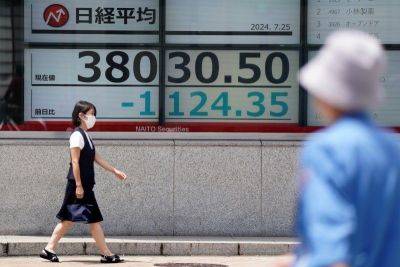Temu, SKIMS, Fashion Nova: Fast fashion brands score zero on human rights and environmental policies
At a factory in Zhejiang province on China’s eastern coast, two mounds of discarded cotton clothing and bed linens, loosely separated into dark and light colors, pile up on a workroom floor. Jacket sleeves, collars and brand labels protrude from the stacks as workers feed the garments into shredding machines.
It’s the first stage of a new life for the textiles, part of a recycling effort at the Wenzhou Tiancheng Textile Company, one of the largest cotton recycling plants in China.
Textile waste is an urgent global problem, with only 12 per cent recycled worldwide, according to the Ellen MacArthur Foundation. Even less - only 1 per cent - of castoff clothes are recycled into new garments; the majority is used for low value items like insulation or mattress stuffing.
Nowhere is the problem more pressing than in China, the world’s largest textile producer and consumer, where more than 26 million tons of clothes are thrown away every year year, according to government statistics. Most of it ends up in landfills.
And factories like this one are barely making a dent in a country whose clothing industry is dominated by fast fashion - cheap clothes made from unrecyclable synthetics, not cotton. Produced from petrochemicals that contribute to climate change, air and water pollution, synthetics account for 70 per cent of domestic clothing sales in China.
China's footprint is worldwide: E-commerce juggernaut brands Shein and Temu make the country one of the world’s largest producers of cheap fashion, selling in more than 150 countries.
To achieve a game-changing impact, what fashion expert Shaway Yeh calls “circular sustainability” is needed among major Chinese clothing brands. This means waste is avoided entirely.
“You need to start it from recyclable fibres and then all these waste textiles will be put into use again,” she said.
But that is an elusive goal: Only about 20 per cent of China’s textiles are recycled, according to the Chinese government - and almost all of that is cotton.
Chinese cotton is not without a taint of its own, says Claudia Bennett of the nonprofit Human Rights Foundation. Much of it comes from forced labour in Xinjiang province by the country's







